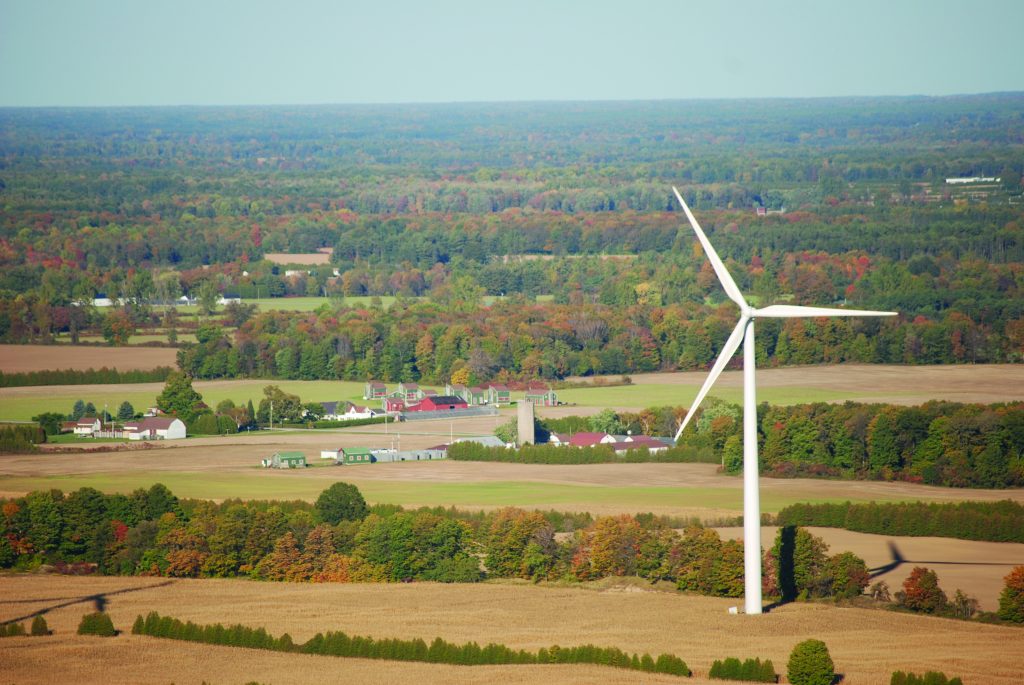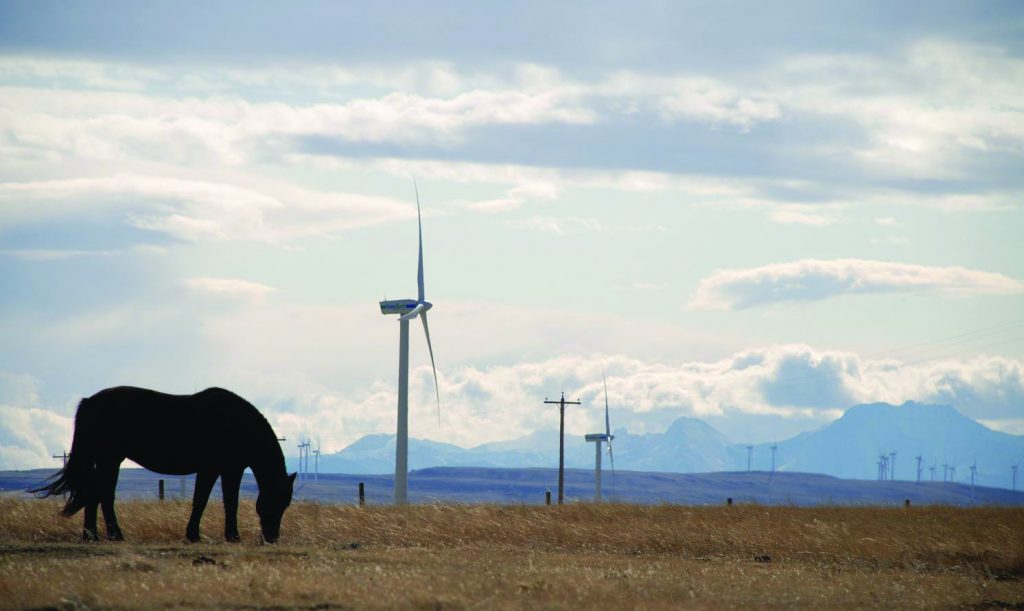n Canada and around the world, wind energy is providing more affordable and clean energy than ever before. Today, wind energy is installed in more than 90 countries and is one of the fastest-growing, lowest-cost forms of electricity. Last year, Canada took eighth place in the world for total onshore installed capacity, following a decade that saw wind energy as the largest source of new electricity generation in the country.
With 12,816 MW of installed capacity across 12 provinces and territories, more than 299 communities have directly benefited from wind energy in Canada, including involvement with more than 35 Indigenous communities. Wind energy in Canada has attracted more than $23 billion in investment, created more than 58,000 person-years of employment in construction and operations, and it continues to provide annual land lease payments to landowners and contribute property taxes to local municipalities.
It does all of this while providing the lowest cost option for new electricity generation in Canada and without emitting air pollutants or greenhouse gases. As energy decision-makers look at ways to meet the growing electricity needs of families and businesses, wind power is the compelling choice.
An affordable solution
Wind energy has many attributes that make it a great choice for new electricity generation in Canada, but one attribute stands apart — price.
Competition and innovation are dramatically driving the price of wind energy down. In the past 10 years, the levelized cost of wind energy fell by 69 percent between 2009 and 2018, according to Lazard’s annual study in the United States. And costs are expected to continue falling. Bloomberg New Energy Finance forecasts wind energy costs will drop another 48 percent by 2050.
Innovation in wind-energy technology, tools, and practices are helping to drive this price drop. Larger turbines can generate more power from a given resource, and technology advances in monitoring and optimization allow more efficient wind harvesting.
In Canada, the impact of this trend has been reflected in the record-low wind-energy contract prices achieved in recent procurement auctions. Alberta’s three recent auctions secured 1,363 MW of wind energy at average weighted prices of $37 to $39 per megawatt hour. The winning bid for Saskatchewan’s most recent procurement came in below $35 per megawatt hour. These prices make wind energy the lowest-cost option for new electricity generation in the country.

A clean source of power
Canadians are increasingly concerned about the impact of electricity generation on our environment, and wind energy is one of the most environmentally sustainable forms of electricity generation. It produces no air or water pollution, generates no toxic, hazardous, or radioactive waste and uses significantly less water than virtually all other forms of electricity generation. The National Renewable Energy Laboratory report, Life Cycle Greenhouse Gas Emissions from Electricity Generation, has demonstrated that wind energy is one of the most environmentally-sustainable forms of generation even when impacts are considered on a life-cycle basis for all of the resources required to enable wind energy to be produced.
Canada has committed to reducing its greenhouse gas emissions by 30 percent below 2005 levels by the year 2030 and recognizes the importance of a clean electricity grid in supporting that objective. Canada also has signaled long-term intentions consistent with the Paris Agreement on Climate Change by releasing a mid-century greenhouse gas strategy that envisions reducing its emissions by at least 80 percent below 2005 levels by the year 2050. This will require Canada to move to an essentially 100 percent non-emitting grid by 2050.
Studies have consistently demonstrated that significant carbon reductions on the order of what is required to meet the commitments in the Paris Accord can only be achieved if Canada electrifies key segments of the economy that can be plugged in, such as transportation, buildings, and industries. And there is little doubt that the power for this electrification must be affordable, and it must be clean — a demand that wind energy is well positioned to help with.
A reliable electricity grid
Levels of wind-energy integration are going up, and in many jurisdictions around the world, large amounts of wind energy are being reliably and cost-effectively integrated within the electricity grid. Several European countries get a fifth or more of their electricity from wind, while Denmark generates more than half of its electricity from wind turbines.
Currently, wind energy meets approximately 6 percent of Canada’s electricity demand, producing enough energy to power approximately 3.3 million homes. In Canada, the 2016 Pan-Canadian Wind Integration study shows that wind energy can reliably supply more than one-third of Canada’s power needs. In fact, one Canadian province and six U.S. states already generate 20 percent or more of their electricity using wind energy.
Systems operators are able to balance variable supply from wind energy with demand thanks to a number of technology improvements, such as larger wind turbines, increased digitalization, enhanced forecasting, and better alignment of variable generation with flexible generation such as hydropower or energy storage technologies. Looking ahead, Bloomberg’s 2019 New Energy Outlook forecasts that a boom in batteries means wind and solar energy will provide almost 50 percent of global electricity by 2050.
These developments are helping to accommodate the variability of renewable energy options and enable high levels of integration without negative impacts on reliability. In fact, wind energy is also now demonstrating that it can provide a suite of ancillary services that system operators can use to maintain grid reliability day-to-day and in the event of system imbalances or emergencies.

Responding to a growing demand
In its most recent energy supply and demand projections to 2040, Canada’s National Energy Board (NEB) published a “reference case” (business-as-usual scenario) that indicated the nation will need new electricity generation facilities to power the coming decades. This reference case predicts that wind energy will be a major contributor of that new power through the installation of an average of 510 MW of new wind-energy capacity every year. While this significant projected growth reflects wind energy’s cost-competitiveness, there is room for even more growth.
Over the past decade, Canada installed new wind-energy capacity at a pace closer to 1,000 MW per year. Looking ahead, Canada will need more low-cost, reliable, and clean electricity — particularly in the face of climate change. Fortunately, wind-energy projects can be built rapidly at different scales by a wide variety of stakeholders, enabling Canada to flexibly harness wind in response to growing demand for renewable electricity.
The grid of the future will be far more diverse, decentralized, flexible, and participatory. This is because global competition and innovation are driving down costs and spurring rapid growth of a range of technologies that are disrupting the electricity grid and changing how supply and demand are managed. From electricity storage to energy efficiency to a smart grid, innovations are creating many possibilities for synergies that can allow Canada to make the most of its abundant wind and other renewable energy resources.
Exploring opportunities for growth
This fall, Canada’s largest wind-energy conference will attract more than 1,200 industry leaders in Calgary, Alberta, from October 8 to 10. The 35th Annual CanWEA Conference and Exhibition (windenergyevent.ca) will see attendees not only celebrate the successes achieved thus far, but also explore the current and emerging opportunities to drive continued growth in the face of a rapidly advancing global energy transition.
Over three days, business executives, technical experts, decision makers, and government representatives will highlight the key issues facing wind energy today and identify the innovative trends that will guide the future of clean energy growth. They will discuss the big picture of Canada’s evolving electricity system and growing wind-energy industry; navigate changing market and policy dynamics; examine the disruptive technologies and rapid innovation that are affecting Canada’s electric utilities; and explore the role of wind energy in supporting grid reliability.
The CanWEA Annual Conference & Exhibition will provide an unparalleled opportunity for all members and stakeholders of the wind-energy industry to focus on the opportunities and solutions that will ensure Canada remains competitive in a low-carbon global economy.
Canada’s renewable energy future
The energy sector is evolving rapidly, and customers — including homeowners, commercial and industrial businesses, utilities, system operators, and governments at large — are increasingly demanding renewable, affordable, clean, and flexible energy options. Canada’s electricity system will need significantly increased amounts of renewable energy in a more flexible electricity grid if it is to be affordable, reliable and climate-friendly.
The wind-energy industry will play an integral role in this transition, and it will do so alongside other energy technologies such as solar energy and energy storage.
























